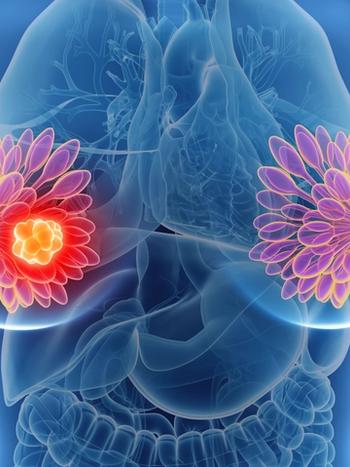
- ONCOLOGY Vol 16 No 11
- Volume 16
- Issue 11
New Techniques for Predicting Risk of Breast Cancer and Diagnosing it Early
At the recent Department of Defense Breast Cancer Research Program "Era of Hope" meeting, held in Orlando, Fla, researchers presented a prototype for a simple test that can rapidly screen tiny samples of tissue for biomarkers of breast
At the recent Department of Defense Breast Cancer Research Program "Era of Hope" meeting, held in Orlando, Fla, researchers presented a prototype for a simple test that can rapidly screen tiny samples of tissue for biomarkers of breast cancer.
"This technology allows for the simultaneous testing of many proteinsusing a very small sample of blood or tissue," said Richard C. Zangar, PhD,senior research scientist at the Department of Energy’s Pacific NorthwestNational Laboratory in Richland, Wash. In addition, the test uses existingtechnology, making it readily transferrable to the clinical setting.
Dr. Zangar and his colleagues demonstrated the sensitivity of the test byusing it to measure the hepatocyte growth factor, shown to be present atelevated levels in recurrent breast cancer. The test detected significantlyhigher levels of the growth factor in the blood of breast cancer patientscompared to controls. These findings were reported in the May/June 2002 issue ofthe Journal of Proteome Research.
"There are literally hundreds of potential markers," said Dr.Zangar. "And with this technology, you can screen hundreds of markers veryquickly."
Genotype, Family History, and Risk
Researchers have also identified a genotype associated with breast cancer inrecently diagnosed women who claim a first-degree relative (mother and/orsister) with the disease. Among women diagnosed at age 50 years or older, thelink is even stronger.
"Women in the United States whose mother or sister has had breast cancerhave twice the risk of developing the disease by age 85 as women in the generalpopulation," said Eldon R. Jupe, PhD, Immunobiology and Cancer Program,Oklahoma Medical Research Foundation, Oklahoma City.
Dr. Jupe’s previous research showed that one location on the prohibitingene is often altered in breast cancer cell lines. His research team found thatthis altered region gives rise to two alleles, referred to as C and T. The Cvariation codes for an RNA molecule that interferes with the cell cycle andsuppresses tumor growth in animals; the T variation is functionally inactive.
Based on this finding, Dr. Jupe and his team compared prohibitin genotypes in205 patients and 1,046 control subjects. They found an increased risk amongpatients who carried the T allele if a first-degree relative also had breastcancer. An even stronger association, nearly double, was identified in womendiagnosed with the disease at or before age 50.
"If these findings are validated, they could lead to a greater awarenessof the importance of routine breast cancer screening for women with both familyand genetic risk factors," said Dr. Jupe. In the meantime, enrollment inthis study continues, with a goal of 400 recently diagnosed women.
Articles in this issue
about 23 years ago
Study Reveals Benefits of Drug Pump for Cancer Painabout 23 years ago
Three Themes to Guide von Eschenbach as NCI Directorabout 23 years ago
Update: AIDS United States, 2000about 23 years ago
Rituxan Delays Disease Progression in Indolent Non- Hodgkin’s Lymphomaabout 23 years ago
Radiation Therapy Alone Can Be Used to Treat Rectal Cancerabout 23 years ago
Oncologic Imaging, Second Editionabout 23 years ago
Monitoring Pregnancy Is Key After Wilms’ TreatmentNewsletter
Stay up to date on recent advances in the multidisciplinary approach to cancer.

























































































